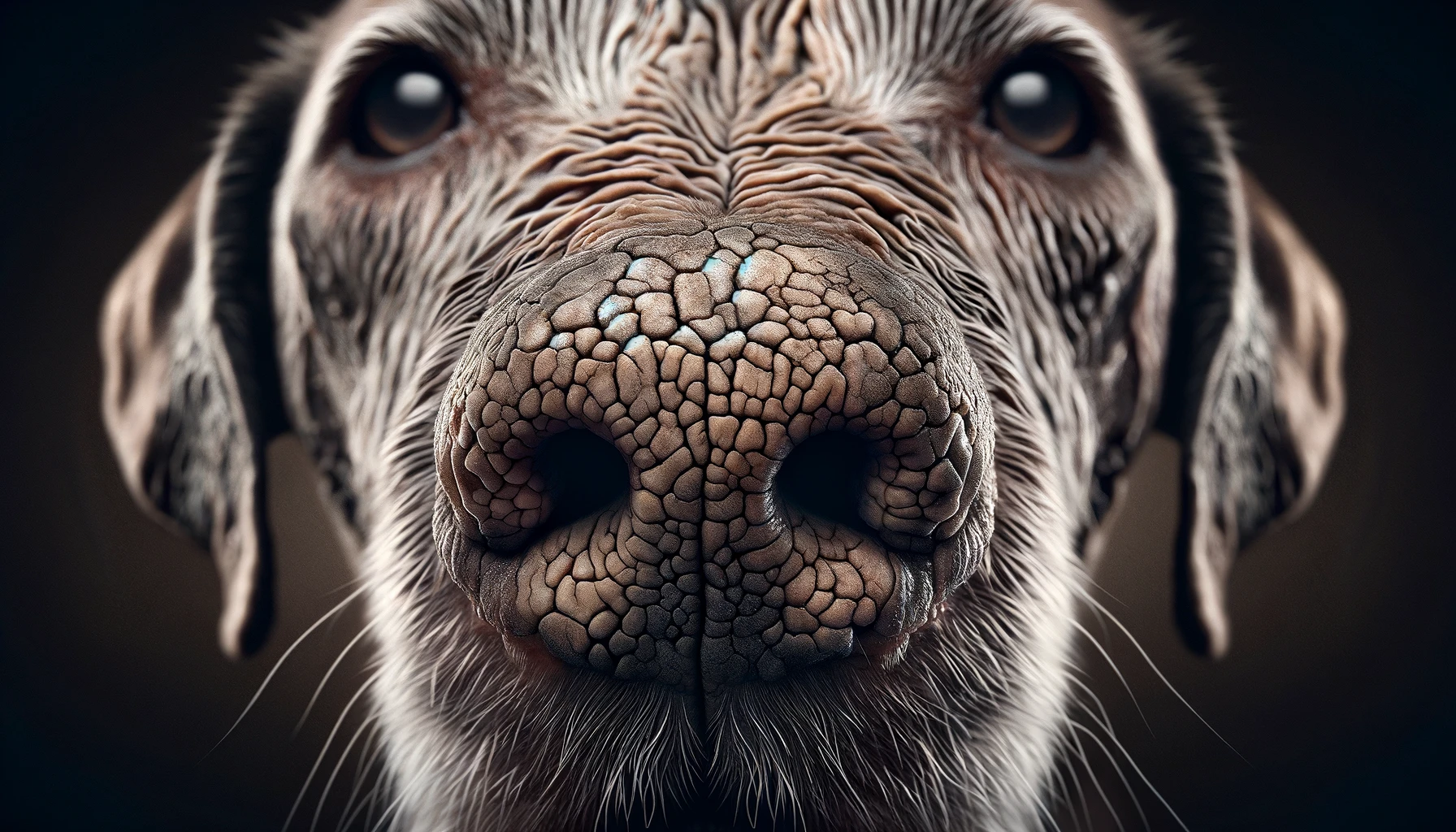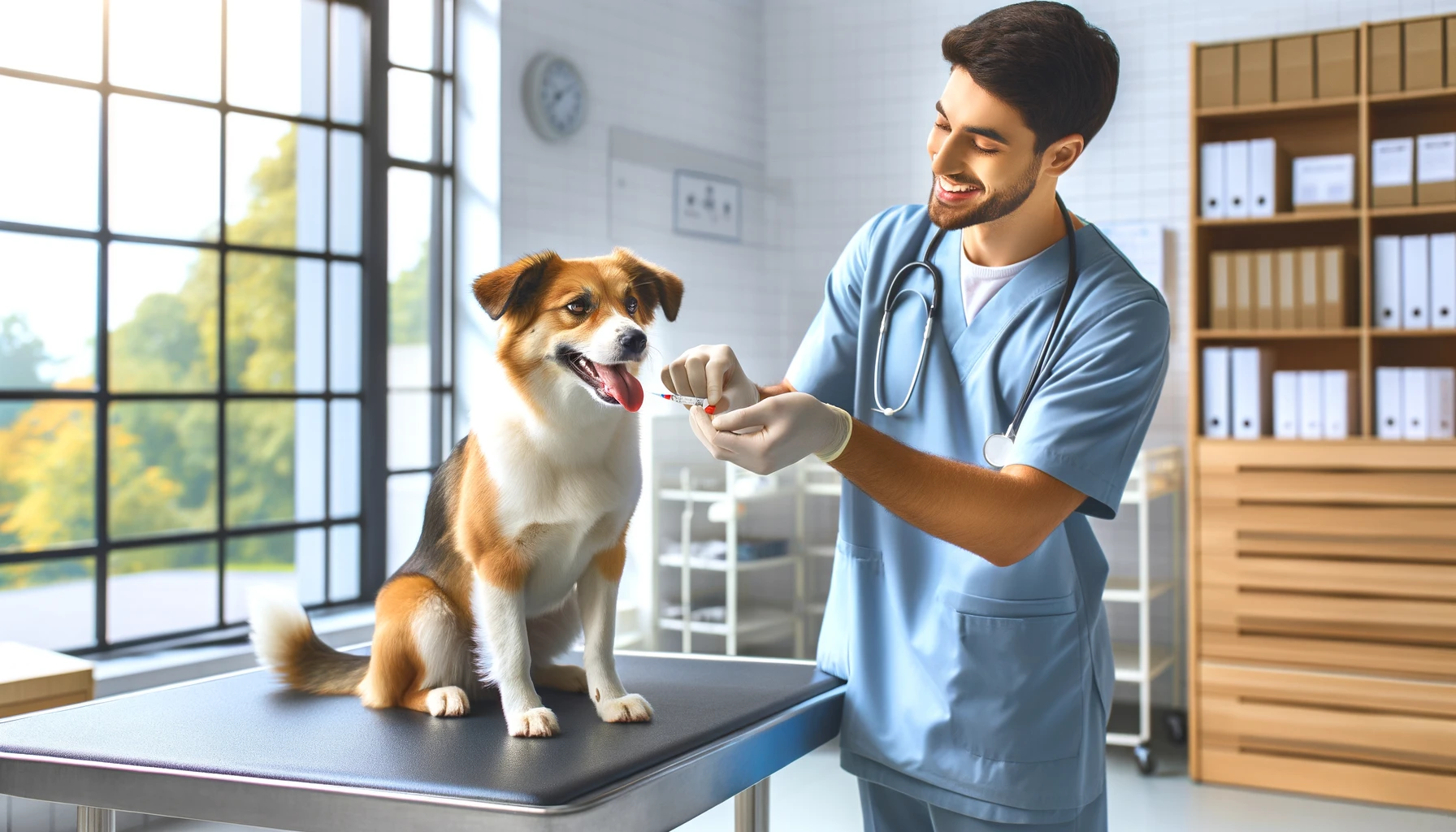Do you know how often dogs need rabies shots?
Let’s say you have a new puppy named Max. Max gets his first rabies vaccination when he is around 14 to 16 weeks old. After a year, he will need a booster shot.
But how often does he need to get vaccinated after that? Well, it actually depends on the state laws and the type of vaccine used. In general, dogs receive rabies boosters every 1-3 years.
To make sure you’re following the right schedule for your furry friend, it’s always best to consult with your veterinarian. Remember, keeping up with rabies vaccines is essential to protect your pet and prevent the spread of this dangerous disease.
Key Takeaways
- Puppies should receive their first rabies vaccination between 14 and 16 weeks of age.
- Subsequent rabies boosters are given every 1-3 years, depending on state laws and vaccine type.
- Geographic location and associated risk factors play a crucial role in determining the frequency of rabies shots.
- Not vaccinating your dog against rabies can have legal implications, including fines and potential quarantine.
Recommended Rabies Vaccination Schedule
To ensure your dog’s protection against rabies, it’s important to adhere to the recommended vaccination schedule. Dogs need rabies shots to prevent the spread of this deadly viral disease. The recommended rabies vaccination schedule for puppies is to receive their first shot between 14 and 16 weeks of age. This initial vaccination is followed by a booster shot one year later. Subsequent rabies boosters are given every 1-3 years, depending on state laws and the type of vaccine used.
Following the recommended rabies vaccination schedule is crucial in keeping your dog safe from this preventable disease. Rabies shots are designed to stimulate the immune system, providing your dog with long-lasting protection against rabies. By adhering to the recommended schedule, you can ensure that your dog’s immunity stays strong and that they’re adequately protected.
It is important to note that the specific requirements for rabies boosters may vary depending on the vaccine used and state laws. Some states may allow for extended booster intervals of five or seven years, while others adhere to the traditional 1-3 year schedule. Additionally, waivers may be available for dogs that have severe reactions to the vaccine in at least 16 states.
Factors Influencing the Frequency of Rabies Shots
Age and immunity as well as geographic location and risk are two important factors that influence the frequency of rabies shots for dogs.
Puppies typically receive multiple doses of the vaccine to ensure proper immunity, while adult dogs may require boosters at different intervals depending on state laws and local guidelines.
Additionally, the risk of rabies exposure can vary based on where you live, so it’s crucial to consider these factors when determining how often your dog needs to be vaccinated.
Age and Immunity
You should consider the age and immunity of your dog when determining the frequency of rabies shots.
Puppies typically receive their first rabies vaccination between 14 and 16 weeks of age, followed by a booster shot one year later.
Subsequent rabies boosters are given every 1-3 years, depending on state law and vaccine type, as the immune response weakens over time.
However, the 2020 Rabies Challenge Fund Research Study showed the potential for longer intervals between vaccinations, such as five or seven years.
Dogs with low serum antibody titers still demonstrated immunologic memory to rabies, suggesting that extended intervals between rabies boosters could be feasible.
It’s important to note that waivers are available in some states for dogs with severe reactions or health concerns, emphasizing the need to consider individual pet health when determining vaccination schedules.
Geographic Location and Risk
Considering the varying risk factors based on geographic location, it’s important to assess the potential need for more frequent rabies shots for your dog.
State laws regarding rabies shots for dogs differ across the country, with some states requiring annual boosters and others every three years. The Compendium of Animal Rabies Prevention and Control, which most states rely on, also influences the schedule for rabies shots, even if your dog received a three-year vaccine.
Additionally, certain geographic locations have a higher prevalence of rabies cases in wild animals such as raccoons, skunks, foxes, and bats. States like Georgia, New York, Pennsylvania, Texas, Florida, and California have documented the highest number of rabies cases, indicating a potential need for more frequent rabies shots in these areas.
It’s crucial to consider the geographic location and associated risk factors when determining the frequency of rabies shots for your dog.
Potential Risks of Not Vaccinating Your Dog Against Rabies
Not vaccinating your dog against rabies can have serious consequences.
First, there are legal implications for non-vaccination, including fines and potential quarantine for your pet.
Second, by not vaccinating, you’re putting your dog at an increased risk of contracting rabies through bites from infected animals, which can be fatal.
It’s crucial to prioritize your dog’s health and safety by ensuring they’re properly vaccinated against rabies.
Legal Consequences for Non-Vaccination
Failing to vaccinate your dog against rabies can lead to serious legal repercussions, including fines and potential quarantine. Rabies is a deadly virus that can be transmitted to humans through the bite of an infected animal, such as a dog.
Vaccination isn’t only crucial for the health and safety of your dog but also for the protection of public health. Local governments have established laws and regulations mandating the vaccination of dogs against rabies. Non-compliance with these laws can result in fines and other legal consequences.
Additionally, unvaccinated dogs may be subject to quarantine, which can be a stressful and isolating experience for both the pet and the owner. It’s important to be aware of and comply with the vaccination requirements in your area to avoid these potential risks and ensure the well-being of your dog and the community.
Increased Risk of Transmission
To understand the potential risks of not vaccinating your dog against rabies, it’s important to acknowledge the increased risk of transmission that arises in unvaccinated animals.
Rabies is a highly contagious virus that can be transmitted through the saliva of infected animals, most commonly through bites. Unvaccinated dogs are more vulnerable to contracting rabies if they come into contact with infected wildlife or other animals carrying the virus.
This not only puts their own health at risk but also poses a threat to public health and safety. Rabies is a serious and often fatal disease that can affect both animals and humans.
By ensuring that your dog receives regular rabies vaccinations, you can significantly reduce the risk of transmission and protect both your pet and the community from this deadly virus.
Common Side Effects of the Rabies Vaccine
After receiving the rabies vaccine, you may experience common side effects such as mild discomfort, swelling, and fever. These side effects are typically mild and resolve on their own within a day or two. It’s important to note that these side effects are a normal response to the vaccine and indicate that your dog’s immune system is responding to the vaccine as intended.
In some cases, the injection site may become swollen or tender. This is a common side effect and shouldn’t cause alarm. However, if the swelling persists or worsens, it’s recommended to consult with your veterinarian to rule out any underlying issues.
Occasionally, dogs may develop a low-grade fever after receiving the rabies shot. This is also a normal response and should resolve within a day or two. It’s important to monitor your dog’s temperature and ensure that it doesn’t become excessively high.
While uncommon, serious side effects such as vomiting, hives, or difficulty breathing can occur after the rabies vaccine. If your dog experiences any of these symptoms, it’s crucial to seek immediate veterinary attention.
How to Determine if Your Dog Is Overdue for a Rabies Shot
To determine if your dog is overdue for a rabies shot, check the date of their last vaccination. Rabies vaccines are typically given every one to three years, depending on the type of vaccine used and the laws in your state. If your dog’s last vaccination was more than three years ago, they’re likely overdue for a booster shot. It’s important to keep your dog’s rabies vaccinations up to date to ensure their protection against this deadly virus.
If you’re unsure about your state’s specific requirements for rabies vaccinations, consult with your veterinarian. They’ll be able to provide you with the most accurate information based on your location and your dog’s age. It’s also important to be aware of any local laws or regulations regarding rabies vaccination requirements for dogs.
In some cases, your veterinarian may recommend extending the interval between rabies booster shots based on the latest research. However, it’s crucial to follow the guidelines provided by your veterinarian and adhere to your state’s laws to ensure the health and safety of your dog and the community.
If you suspect that your dog may be overdue for a rabies shot, contact your veterinarian immediately. They’ll be able to assess your dog’s vaccination status and recommend the appropriate course of action to keep your furry friend protected against rabies.
Importance of Contacting a Veterinarian for Rabies Vaccination Appointments
When determining the importance of contacting a veterinarian for rabies vaccination appointments, it’s essential that you consult with a licensed professional to ensure your dog’s health and adherence to local vaccination requirements.
Vaccinations are a crucial part of your dog’s preventive healthcare routine, and rabies vaccines are especially important due to the serious nature of the disease. Only licensed veterinarians can administer rabies shots, so it’s necessary to schedule an appointment with a veterinarian to ensure that your dog receives the proper vaccination.
By contacting a veterinarian, you can receive expert guidance on local vaccination requirements, as these may vary by state. The veterinarian will also be able to provide you with options between one-year and three-year rabies vaccines, depending on your dog’s specific needs and the regulations in your area.
Additionally, a veterinarian can determine the appropriate vaccination schedule for your pet, considering factors such as age, lifestyle, and overall health.
Working with a veterinarian not only ensures the safety and health of your dog but also plays a vital role in preventing the spread of rabies. Rabies is a deadly disease that can be transmitted to humans, so it’s crucial to keep your dog up to date on their rabies vaccinations.
Contacting a veterinarian for rabies vaccination appointments is an important step in keeping your dog protected and maintaining compliance with local regulations.
Frequently Asked Questions
How Long Is a Rabies Vaccine Good for in a Dog?
A rabies vaccine for your dog is typically good for one to three years, depending on the vaccine type and state laws. Its effectiveness and duration are determined by the guidelines set by your state.
Why Do Dogs Need Rabies Shots Every 3 Years?
To keep your furry friend safe, dogs need rabies shots every 3 years. These boosters help their bodies recognize and fight the virus, ensuring ongoing protection. The vaccine’s effectiveness weakens over time, so regular shots are crucial for lasting immunity.
At What Age Can I Stop Vaccinating My Dog?
You should consult with your veterinarian to determine the appropriate vaccination schedule for your dog. They will consider factors such as the vaccine’s effectiveness and potential risks to ensure your dog’s safety and health.
Is There a Difference Between 1 Year and 3 Year Rabies Vaccine for Dogs?
Yes, there is a difference between the 1 year and 3 year rabies vaccine for dogs. The 3 year vaccine is just as effective as the 1 year vaccine, but it meets the legal requirements for rabies vaccination for a longer period of time.
Conclusion
In the wild jungle of dog health, the rabies vaccine acts as a protective shield, defending our furry friends from the lurking danger. Just as a knight needs armor, our dogs need regular rabies shots to keep them safe from this deadly disease.
By staying up-to-date with their vaccinations, we can ensure their continued well-being and shield them from the darkness that rabies brings.
So, let’s be responsible guardians and keep our four-legged companions protected, for they’re our loyal companions in this adventure called life.






